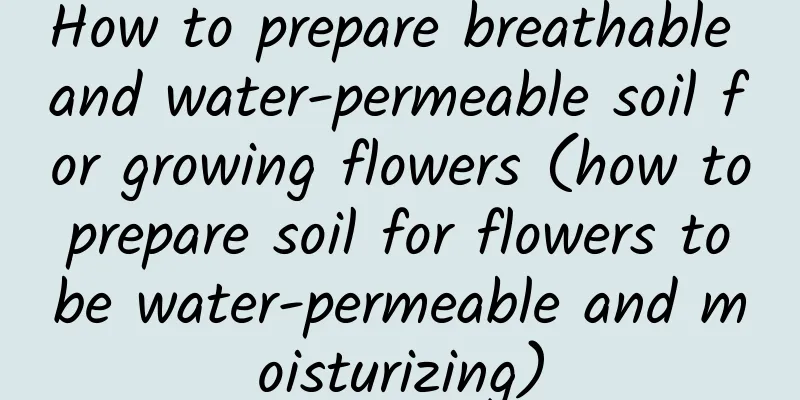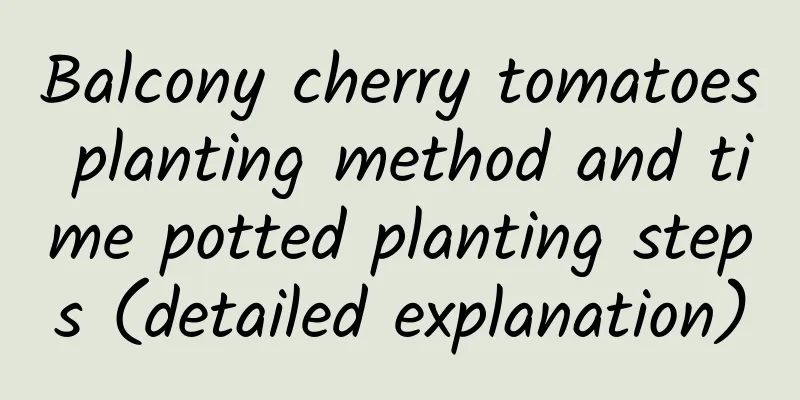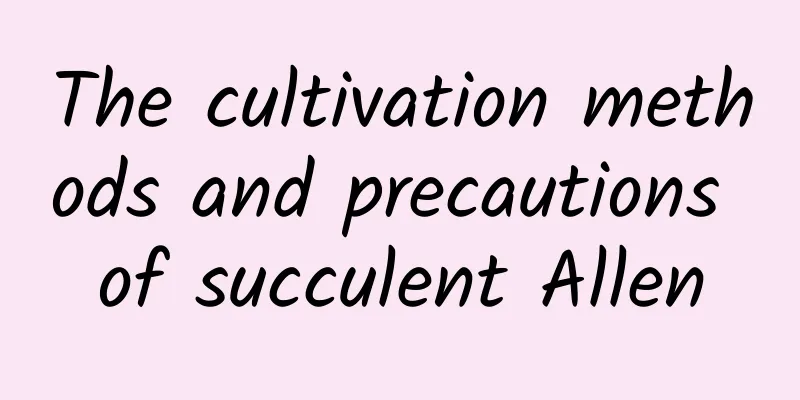How to prepare breathable and water-permeable soil for growing flowers (how to prepare soil for flowers to be water-permeable and moisturizing)

|
There are many important points during the breeding and management period, especially in the soil matching. I personally recommend the following materials, mixing them in a certain proportion, which can fully cater to the characteristics of plants that like water-permeable, breathable and fertile soil. The first type, humus soilMany of my friends around me are willing to go far away to collect some naturally fermented and decomposed humus soil in order to grow flowers. These humus soils are often found under trees in some original forests or parks. After bringing them home, you only need to sterilize and disinfect them before mixing them with other media to plant flowers and grass. Of course, when we choose humus soil first, we also need to pay attention to choose some humus soil that is slightly moist and brown in color. Especially the humus soil under pine trees or willow trees, which contain a large amount of salicylic acid , which can continuously stimulate the growth of plant roots during the growth of plants, indirectly improve the plant's disease resistance and adaptability, allowing the roots to absorb more nutrients and transport them to the flowers and leaves. The method of sterilizing and disinfecting the rotten grass is also very simple. After bringing it home, you can kill pests and bacteria by exposing it to high temperature. Usually, you can just put it in the microwave and heat it for about ten minutes. The second type is sandy soilFine river sand can be mixed into other media for planting flowers and grass. The same sandy soil, because of its relatively poor water retention capacity, can also be mixed into different materials to enhance the water and air permeability of the material. It can fully ensure that the roots of plants will not rot due to the stuffy environment. Usually, after the sandy soil is collected, it needs to be properly screened before growing flowers to remove the relatively large particles inside. The third type is park soilThe soil referred to here is usually the soil dug back from the surrounding green belts. Although it is rich in organic matter, most of it is ordinary soil, and there may even be some plant roots. Therefore, before growing flowers, we need to screen them carefully and remove all soil with grass roots or lumps. Generally, we only retain the fine soil, which is relatively loose and suitable for plant growth, especially during the seedling period. Fourth, mixed soilFor example, orchids, due to the different climates, habits and orchid-growing conditions in different places, the orchid-growing substrates used are also different. I will take the cultivation of orchids in the northern region as an example to talk about my method of selecting planting materials. The matrix formula I currently use is a mixture of 30% peat soil + 20% pine bark + 20% planting stone + 15% river stones + 15% broken red bricks. The biggest feature of this orchid planting formula is that it is loose and breathable while also being good at moisturizing and retaining fertilizer. However, it is not suitable for watering too frequently or too much. Generally, watering once every 7 to 10 days is appropriate. In general, peat soil and pine bark are two materials that can retain water, contain certain nutrients, and can drain water, which are very helpful for the rooting and germination of orchids. Without peat soil, how can orchid roots sprout crystal heads and extend roots? Therefore, under the general conditions of low air humidity and excessively dry air in the northern region, if orchids are planted using all-granular planting materials, watering is difficult to control. |
>>: Why do camellia buds fall off? (Why do camellia buds always fall off without blooming?)
Recommend
What to do if bougainvillea drops flowers and leaves
Why does bougainvillea drop its flowers? Human fa...
When is corn harvested?
Corn harvest time Corn is divided into spring cor...
How to repot lucky bamboo
1. The purpose of repotting The matrix contains v...
Can cotton be grown in pots?
Can cotton be grown in pots? Cotton can be plante...
What crops are suitable for planting in spring? What crops can be planted in spring?
The weather is most suitable for planting crops i...
What does the Four Gentlemen of Flowers refer to?
1. Plum Blossom It is one of the four gentlemen a...
How to grow celery
1. Soak the seeds Celery seeds must be soaked bef...
Is Crinum suitable for growing at home?
1. Can be domesticated Crinum is suitable for gro...
Can rice water be used to water flowers directly? How to use rice water to water flowers
Can rice water be used to water flowers directly?...
Play with meat, understand some professional terms
Succulent Name When searching for a certain succu...
How to water the nutrient solution for hydroponic green radish
1. Usage time When you first start hydroponics, d...
What kind of fertilizer is good for the base fertilizer of lotus? How to apply base fertilizer
Selection of base fertilizer for lotus During cul...
How to breed Chinese mosquito queen?
The Chinese mosquito net is a plant of the genus ...
How to prune roses in winter
1. Prepare tools Before pruning, prepare special ...
When to change the water for hydroponic hyacinth
Does hydroponic hyacinth need water change? When ...









